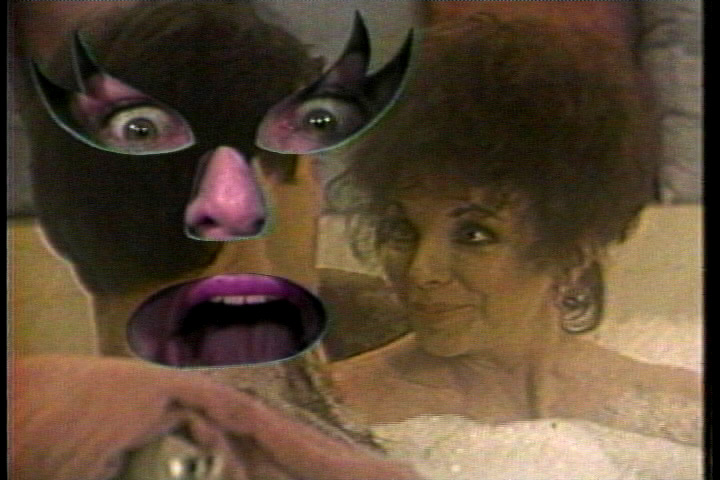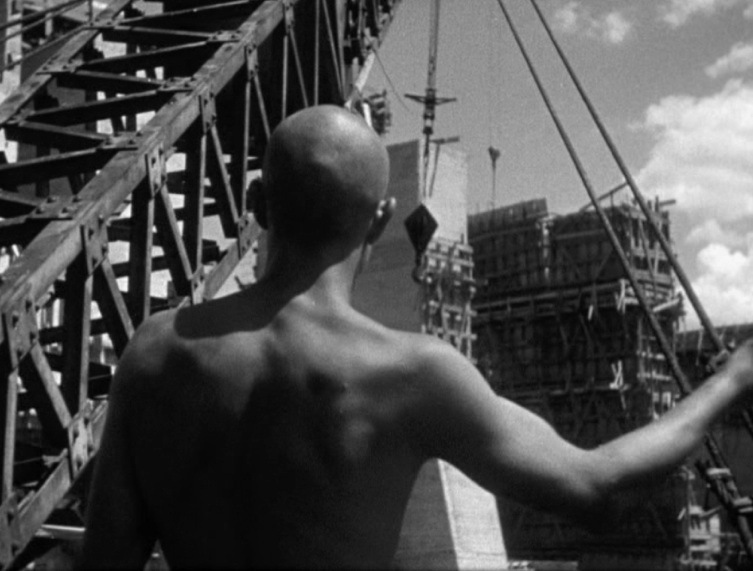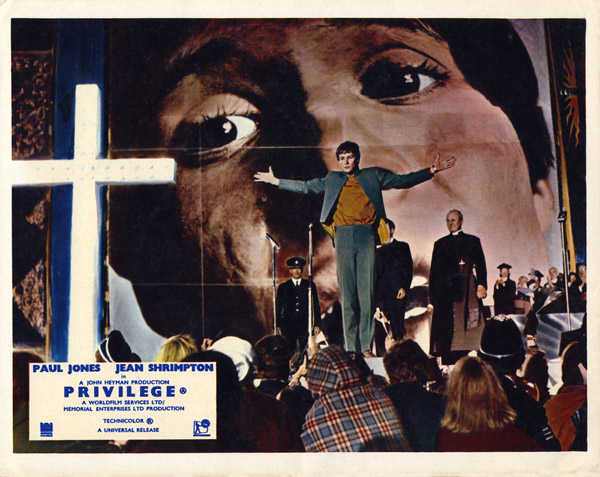Written for The Unquiet American: Transgressive Comedies from the
U.S., a catalogue/collection put together to accompany a film series at the
Austrian Filmmuseum and the Viennale in Autumn 2009. — J.R.

Long before the advent of Slavoj Zizek, U.S.
academic Joan Braderman in 1986 offered a bracing
exercise in standup theory and comic deconstruction
in this half-hour unpacking on video of the most successful
nighttime soap opera on television, which is
said to be the favorite series of one hundred million
people in 78 countries. Utilizing some of the special
effects of codirector and coeditor Manuel De Landa
to project herself literally into Dynasty and thereby
critique its cultural and ideological underpinnings,
Braderman manages to mix appreciation with scorn
in almost equal quantities.
 Read more
Read more
From the Chicago Reader (June 1, 2002). — J.R.

Alexander Dovzhenko’s first sound film, revolving around the construction of a giant dam on the Dnieper River, is one of his greatest, though it was poorly received in the Soviet Union when it came out in 1932. It’s only one of the eccentricities of this lyrical and monumental feature that the title refers to three different characters, and it’s telling that the father of one of them, an illiterate peasant who proudly spends his time fishing and loafing while everyone else works, is treated with considerable warmth. (A sequence in which he’s frightened when addressed by an outdoor loudspeaker evokes Chaplin as well as Tati.) As in all of Dovzhenko’s best work, the style veers closer to lyrical poetry (its opening sequence about the river) and portraiture (a later segment introducing us to various workers) than to narrative, though it’s innovative in other respects as well: the final sequence includes some striking jump cuts almost 30 years before Jean-Luc Godard purportedly invented them in Breathless. In Russian with subtitles. 90 min. (JR)

 Read more
Read more
From American Film (July-August, 1981). -– J.R.

This summer, Manhattan’s Whitney Museum of American Art is honoring animation — the work of many unsung individuals at the Walt Disney Studio between the late twenties and early forties — as high art.
Guest curator Greg Ford has selected approximately fifteen’ hundred individual pieces of art from the immense Disney archives, ranging from individual drawings to about a hundred films. And the Whitney has taken t0he unprecedented step of commissioning SITE — an innovative architectural and environmental arts organization — to mount these heretofore hidden treasures.
Perhaps best known for its eccentrically designed showrooms for the Best Products Company, with crumbled, notched, peeling, and tilted façades, SITE promotes the concept of architecture as art rather than as design. By its own description, SITE “rejects the traditional concerns of architecture as form and space in favor of architecture as information and thought.”
According to SITE project director Theodore Adamstein, “We’re using the vocabulary of cinema to present this work.” Thus the whole second-floor gallery space of the Whitney is painted black, and lit by a silvery light that highlights the exhibits while keeping spectators in relative darkness. Forty twelve-by-eight-foot screenlike frames, used in a variety of ways, contribute equally to the idea of museum space as movie house. Read more
From the Chicago Reader (May 17, 2002). — J.R.

La Commune (Paris, 1871)
*** (A must-see)
Directed by Peter Watkins
Written by Watkins with Agathe Bluysen and contributions from the cast members.
Some filmmakers say this is my work and I want it to stay that way. That is their right, and we respect that right. Those are the films we don’t buy, and those are the films we don’t transmit. — TV executive in The Universal Clock: The Resistance of Peter Watkins
I’ve been a fan and supporter of Peter Watkins for most of my life. A remarkable master technician and social visionary whose early work is filled to the brim with focused rage, he has created some of the most troubling, thought-provoking, even shattering films I know. This has helped make him persona non grata in mainstream TV and cinema and also in art houses, among academics, at festivals, and on cable TV. When his name does come up in those diverse realms, he’s often accused of being paranoid — though that hardly explains his pariah status.

Keeping up with his work is hard even for a sympathetic critic like me, and I can’t say I know it well. Read more








